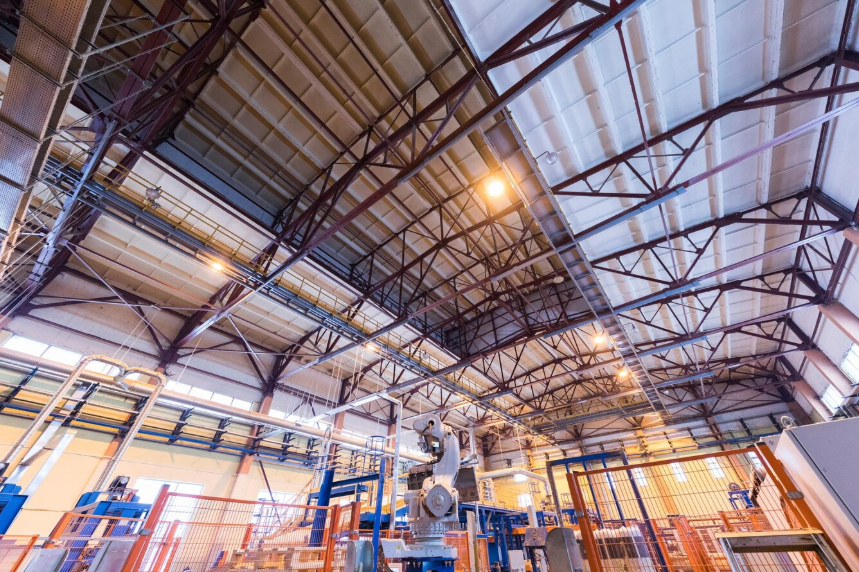Introduction
Let’s face it—factories are the backbone of any industrial economy. But have you ever thought about what keeps these huge facilities safe and productive, beyond the machinery and manpower?
Well, the answer lies in the statutory provisions that govern their lighting, ventilation, temperature control, and exhaust systems. These are not just checkboxes for compliance—they’re essential for worker health, operational efficiency, and legal safety.
If you’re a factory owner, EHS officer, architect, or simply someone keen on understanding industrial safety, this article will guide you through the statutory requirements that keep factory buildings comfortable and compliant.
📜 The Legal Backbone: Factories Act, 1948
India’s primary law governing industrial safety is the Factories Act, 1948, supported by various state-specific rules like the Gujarat Factories Rules, 1963, Maharashtra Factories Rules, etc.
These rules cover:
- Adequate lighting (natural & artificial)
- Effective ventilation
- Safe temperature levels
- Proper exhaust and removal of fumes/dust
Let’s break them down, one by one.
🔆 1. Lighting Provisions in Factories
What the Law Says:
As per Section 17 of the Factories Act, 1948:
“In every part of a factory where workers are working or passing, there shall be provided and maintained sufficient and suitable lighting, natural or artificial, or both.”
Key Highlights:
- Adequate illumination is mandatory in all areas including workplaces, passages, staircases, and amenities.
- Windows and skylights should be installed for natural lighting where feasible.
- Artificial lighting (e.g., LED, CFL) must be non-glare and sufficient to avoid eye strain.
- Emergency lighting is necessary for exits, escape routes, and critical control rooms.
Best Practices:
- Lux levels: Maintain 200-300 lux in general areas; 500 lux in inspection zones.
- Avoid flickering lights—they cause fatigue and stress.
- Position lights to eliminate shadows and dark spots.
- Use energy-efficient lights with good CRI (Color Rendering Index).
Compliance Tip:
Keep a lighting layout plan and lux measurement record as proof during inspections.
🌬️ 2. Ventilation Requirements in Factory Buildings
Statutory Clause: Section 13 of the Factories Act
“Effective and suitable provision shall be made in every factory for securing and maintaining in every workroom adequate ventilation by the circulation of fresh air…”
What This Means:
- Factories must provide natural or mechanical ventilation.
- The aim is to control humidity, fumes, dust, and CO₂ levels.
- Maintain air quality and avoid stale, contaminated air in enclosed areas.
Guidelines:
- Minimum 500 cubic feet of space per worker should be available for natural air movement.
- Install roof ventilators, louvers, and exhaust fans to ensure airflow.
- Use HVAC systems where mechanical ventilation is necessary.
Gujarat Factories Rules Note:
As per Rule 12, rooms shall be ventilated either by natural means or by mechanical equipment so as to maintain comfortable air conditions.
Worker Safety Angle:
Poor ventilation = higher chances of lung disease, chemical inhalation, fatigue. Regular air quality monitoring is advised.
🌡️ 3. Temperature Control in Workspaces
Factories Act Reference: Section 13 (1)(b)
“Effective measures shall be taken to ensure that the temperature in every workroom shall be kept at a comfortable level.”
Acceptable Temperature Range:
- As per Indian regulations: 18°C to 30°C
- For processes generating heat: Install insulation, shielding, exhausts, or cooling systems.
Ways to Achieve This:
- Use insulating panels and false ceilings.
- Provide air curtains at entry points.
- Avoid direct sunlight with UV-reflective films or sunshades.
- For high-temp areas like foundries: Provide restrooms with cooler conditions and allow rotational breaks.
Gujarat Rule Alert:
Rule 15 mandates that if the temperature in any room exceeds 30°C, special cooling measures must be adopted unless process-related.
Worker Health:
Excess heat may cause heat stroke, dehydration, fatigue, and decreased productivity. Always encourage hydration stations and monitor wet bulb temperature where necessary.
💨 4. Exhaust Systems for Fumes, Dust, and Vapors
Legal Anchor: Section 14 – Dust and Fume Removal
“In every factory where any dust or fume or other impurity arises, effective measures shall be taken to prevent its inhalation and accumulation.”
Important Details:
- Provide exhaust fans, scrubbers, or local exhaust ventilation (LEV) at the source.
- Remove toxic fumes, smoke, and dust to avoid respiratory illnesses.
- Install chimneys, ducts, and ensure regular maintenance of exhaust systems.
Gujarat Factories Rules (Rule 17):
- Design must conform to IS standards for exhaust ventilation.
- Exhaust air must not recirculate unless treated.
- Keep performance records of exhaust fans, scrubbers, and fume hoods.
Practical Tip:
Position LEVs close to the emission point—no more than 6–12 inches away.
🧰 Engineering Controls vs. Administrative Controls
Sometimes, statutory compliance isn’t enough—you need real-world solutions to enhance worker comfort.
| Factor | Engineering Control | Administrative Control |
|---|---|---|
| Lighting | Motion-sensor LED lights | Schedule cleaning of skylights |
| Ventilation | Exhaust fans, air purifiers | Regular window opening hours |
| Temperature | HVAC installation | Rotational shift duties |
| Exhaust | Fume scrubbers, hoods | PPE & training for toxic areas |
🧪 Monitoring & Recordkeeping
Ensure statutory compliance audits include:
- Lux measurements for lighting
- Air quality index (AQI) reports
- Temperature logs
- Maintenance records of exhaust systems
- Periodic calibration reports
All this data should be retained for at least 3-5 years for legal audits and factory inspector visits.
🧑🏭 Worker Participation: A Must!
Never forget—the end goal is worker well-being.
Conduct regular:
- Toolbox talks on indoor air quality
- Surveys on thermal comfort
- Feedback sessions on lighting and workspace conditions
When workers feel heard, productivity rises—and so does compliance.
⚠️ Penalties for Non-Compliance
If your factory violates these safety provisions:
- You may be fined up to ₹1 lakh, or face imprisonment up to 2 years.
- Repeat offenses invite closure notices from the Directorate of Industrial Safety and Health (DISH).
- In case of injury or fatality, criminal negligence charges may be imposed.
So yes, it’s not just about safety—it’s a legal responsibility.
✅ Action Checklist for Factory Owners & Managers
✔️ Conduct lighting & ventilation audits
✔️ Maintain exhaust system inspection logs
✔️ Monitor temperature regularly
✔️ Keep statutory documentation ready
✔️ Train EHS staff and supervisors
✔️ Ensure preventive maintenance of fans, ducts, filters
✔️ Consult certified safety officers for layout changes
✔️ Upgrade legacy systems with energy-efficient alternatives
Conclusion
The statutory provisions for lighting, ventilation, temperature, and exhaust aren’t just rules—they’re lifelines for ensuring health, comfort, and productivity inside factory buildings. Whether you’re setting up a new plant or upgrading an old one, these regulations should form the foundation of your planning and operations.
In the end, a well-lit, well-ventilated, temperature-controlled factory isn’t just a legal win—it’s a business advantage.
Enjoyed the read? Share this article with your colleagues and fellow factory managers. Got questions or experiences to share? Drop them in the comments below!
🔁 Readers also enjoyed these blog posts:
- Safety Management’s Role: The Unsung Hero Behind Every Successful Organization
- Safety Management and Its Responsibilities: Protecting People, Preventing Hazards, and Promoting a Culture of Care
- Benchmarking for Safety Performance: A Key to Continuous Improvement
“Start Your Website Journey Today – Exclusive Hostinger Discounts!”

Turn Any Idea into Viral,
Jaw-Dropping AI Videos in Seconds!










